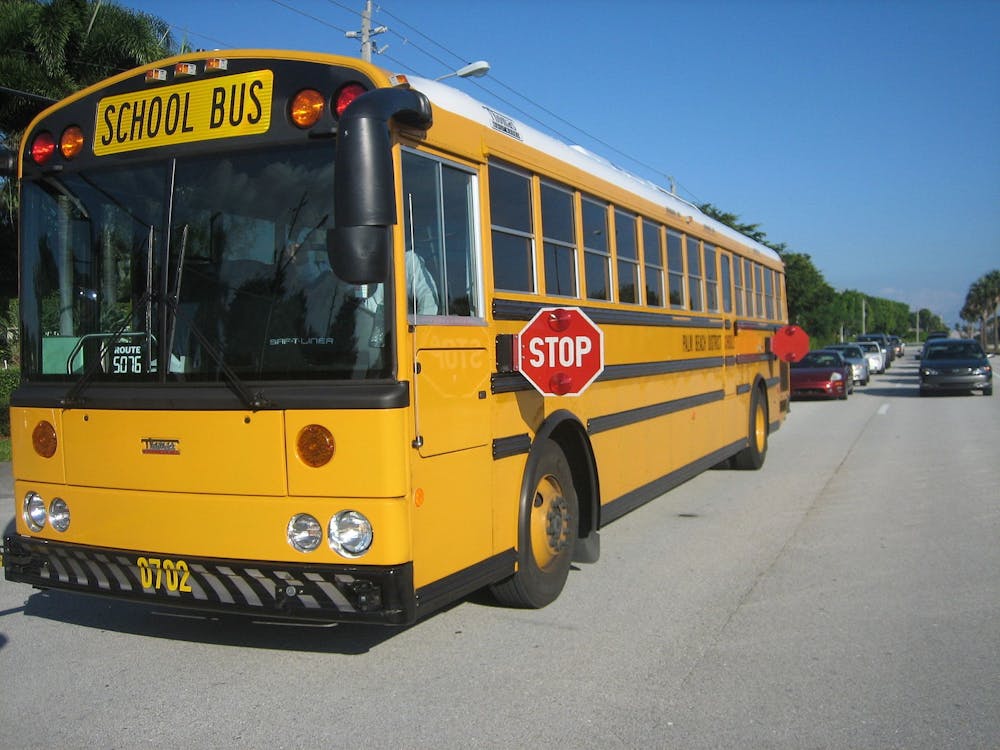In Brown v. Board of Education, the Supreme Court overturned the constitutionality of the "separate but equal" doctrine established in Plessy v Ferguson. As such, many see Brown as the end of segregated schooling in the United States, but further examination of public schooling all over the country reveals a discriminatory system that favors rich white kids and families. The United States has not yet achieved equitable schooling for all students, and there is still a lot of work to be done in order to achieve it.
Even today, over 50 years after Brown, half of public school students are in racially concentrated districts. These schools serve mostly students of color and do not have access to the same resources as those that serve predominantly white students. This inequality is perpetuated by the funding of schools through property taxes. Discrepancies in funding have reached colossal heights — one report even showed that wealthy white districts receive $23 billion more in funding than their counterparts. This stark segregation — which is just as bad as it was in the 1960s — leads many to wonder how this issue has continued for so long.
When districts, or parents, are able to segregate the “high-achieving” students from the “low-achieving” ones, students of color and of low socioeconomic status are left behind. One of the main culprits of this division is the popular “school choice” movement.
School choice, which allows parents to have a say in the school their child attends, has been very popular in the past decades. While it is a seemingly positive movement, it helps solidify the dividing line between wealthy white students and students of color in low-income communities. For example, charter schools — or publicly funded schools that are independent from the public school district in which it resides — allow for self-sorting “on racial, ethnic and other dimensions,” often making them more segregated than the districts in which they are placed. For example, when students of color, most notably black and Latino students, enter charter schools, they often find themselves in schools that are more racially concentrated than their assigned school.
There are some positive examples of charter schools providing ample opportunities for students of color and students in low-income communities. Charter schools do provide opportunities to work outside of the restraints of standard schooling, but they frequently perpetuate segregation. This issue has become so problematic that the NAACP passed a resolution calling for a moratorium on charter schools. Instead of providing these opportunities for a select few, the ideas that fuel charter schools, such as parent involvement, interactive classrooms and interesting curriculums should be implemented in existing public school systems.
Nevertheless, charter schools are not the only systems that exacerbate segregation among schools — magnet schools perpetuate this same discrimination within individual institutions. Magnet schools are a popular desegregation tool that implement programs such as Gifted and Talented, Advanced Placement and International Baccalaureate within schools that previously served mostly students of low socioeconomic status to attract wealthy white students to the district. Nevertheless, only the wealthy students end up in these programs. Magnet schools pose problems because they implement a racial quota, and even segregate students within schools by program. Moreover, less than 10 percent of “gifted and talented” students in the United States are African-American, meaning that even when students of color are in integrated schools, GT and AP programs keep the populations separate.
Many public school systems, including the City of Charlottesville, have nixed gifted programs for a select population. However, several are not ending their gifted programs completely, but instead opting to make curricula more inclusive. Specifically, Charlottesville public schools will now follow a “push-in” model that extends gifted curricula to students of all levels. This program was initiated to help address the issue of racial segregation within Charlottesville schools, making it a more equitable and less biased school system.
Other methods to reform these policies include some schools applying gifted programs to the entirety of the school. This way, students are not separated from a young age by their abilities, and more students have the opportunity to learn.
Education policy should follow the belief that students, no matter their socioeconomic background, can succeed academically if provided with the right resources. Separating students only helps preserve these racial lines that were created by the belief that students of color simply cannot achieve as much as white students can. State and federal governments must take control of this issue, eliminating the discriminatory lines that give wealthy students the advantage and disallowing these families to circumvent this process with school choice. Public schools are an important staple in American society and the most important investment for the future of our nation’s younger generations.
Victoria McKelvey is the Senior Associate Opinion Editor for The Cavalier Daily. She can be reached at v.mckelvey@cavalierdaily.com.







